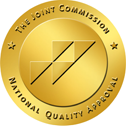Like many other parts of our culture – fashion, music, movies – illicit drugs have their own cycles of popularity. Even if a drug falls out of the national headlines for a time, it never really goes away. In time, it may resurface in a new wave of popularity, possibly in a new form or with a new context. One dangerous illicit drug that appears to be making a comeback is heroin. News reports from New England to New Orleans to Boulder, Colorado and elsewhere are saying that a new generation of users are discovering heroin, with devastating effects.
Old Drug, New Stories
According to the National Institute on Drug Abuse, heroin generally comes in the form of white or brown powder, or as a sticky black substance known as “black tar heroin.” It can be injected, smoked or snorted. Especially when injected or snorted, heroin provides an initial euphoric rush, followed by a drowsy state of half wakefulness, characterized by heaviness of the extremities and clouded thinking. Long-term physical effects of heroin use include collapsed veins, abscesses, infection of the heart, gastrointestinal cramping or constipation, liver disease and kidney disease. The potential for fatal overdose is high, and fatality from heroin use can happen extremely quickly. Because heroin is commonly injected, it also increases the potential risk for contracting HIV or Hepatitis C, which can be transmitted through shared needles or other injection equipment.
While heroin as a drug has not changed much, the reasons it is making a comeback are new. Many individuals are moving to heroin after abusing prescription painkillers such as Vicodin or Oxycontin. These drugs, like heroin, are in the class of opioids, which are drugs that are based on opium. Opioids are very effective painkillers for many people but are quite dangerous if they are not taken exactly as prescribed. There are many types of prescription drugs that people abuse, and opioids are considered to be highly addictive. Generally, a person is abusing opioid drugs when he or she starts taking the drugs in a different manner than prescribed, such as taking them more frequently or in higher doses. Some people make use of prescription drugs that were prescribed for someone else, either with or without permission. Prescription painkillers that were originally being taken for pain can quickly be abused in a way that develops into an addiction.
From Legal to Illicit
Once an addiction to a prescription opioid drug has developed, there are often serious challenges to maintaining it. Because these drugs are only legally available by prescription, maintaining a supply of them requires getting continued prescriptions from doctors – and many doctors won’t continue to write prescriptions if they suspect the patient is abusing the medication. That can lead a person to start “doctor shopping” in order to find one who will write scripts for their opioid drugs. The difficulty and expense of continuing to get prescriptions and buy painkillers pushes some people in the direction of heroin as a cheaper, more easily obtained substitute.
After marijuana and alcohol, prescription drugs are the most commonly abused substance by Americans age 14 and older. Not all prescription drug use involves opioid painkillers; stimulant drugs used to treat ADHD and drugs used to treat anxiety are also widely abused. But with prescription painkiller use and abuse on the rise, it appears very possible that heroin use will continue to increase as well.
Fortunately, there is a range of treatment options for heroin addiction, as well as for the painkiller abuse that paves the way for heroin use. Behavioral therapies are available for heroin addiction, and there are some medications that also help to break addiction for some patients. These medications work by binding to the cell receptors that heroin binds to inside the body, which helps reduce physical cravings while a person is weaned off the drug. No single treatment method works equally well for every individual, but by working with qualified medical and therapeutic professionals, it is possible to design effective treatment programs to help individuals who are suffering from heroin or prescription painkiller addiction.




